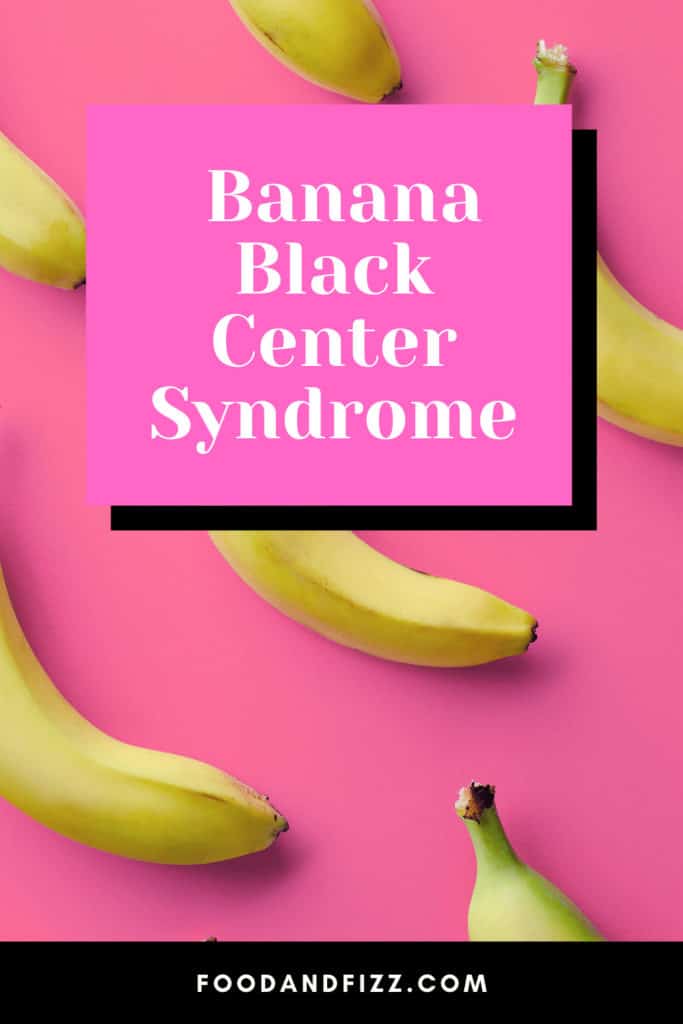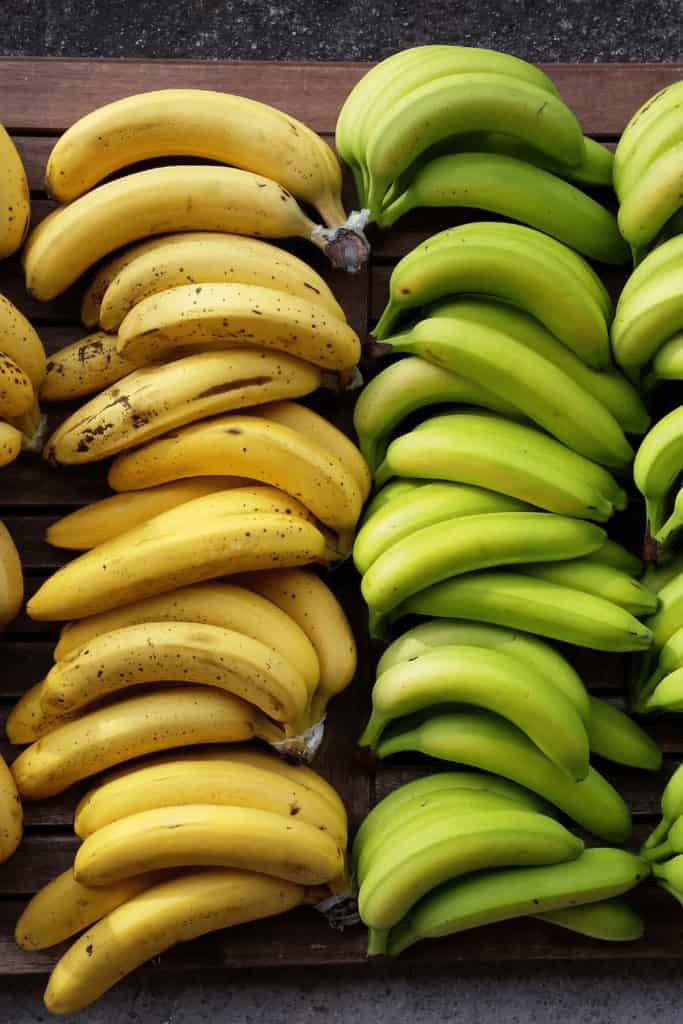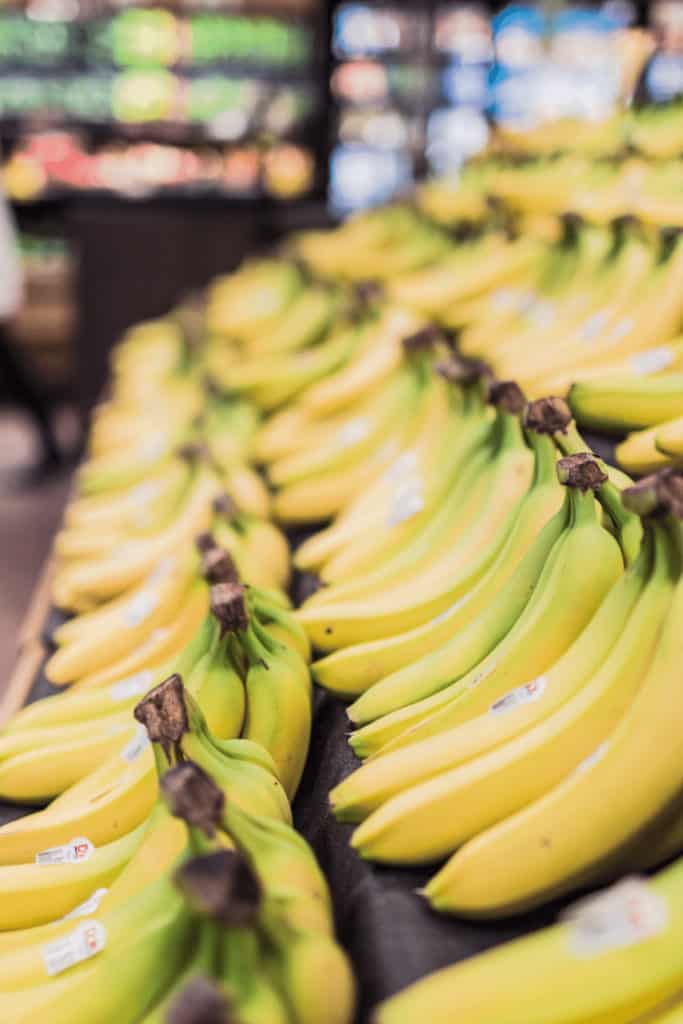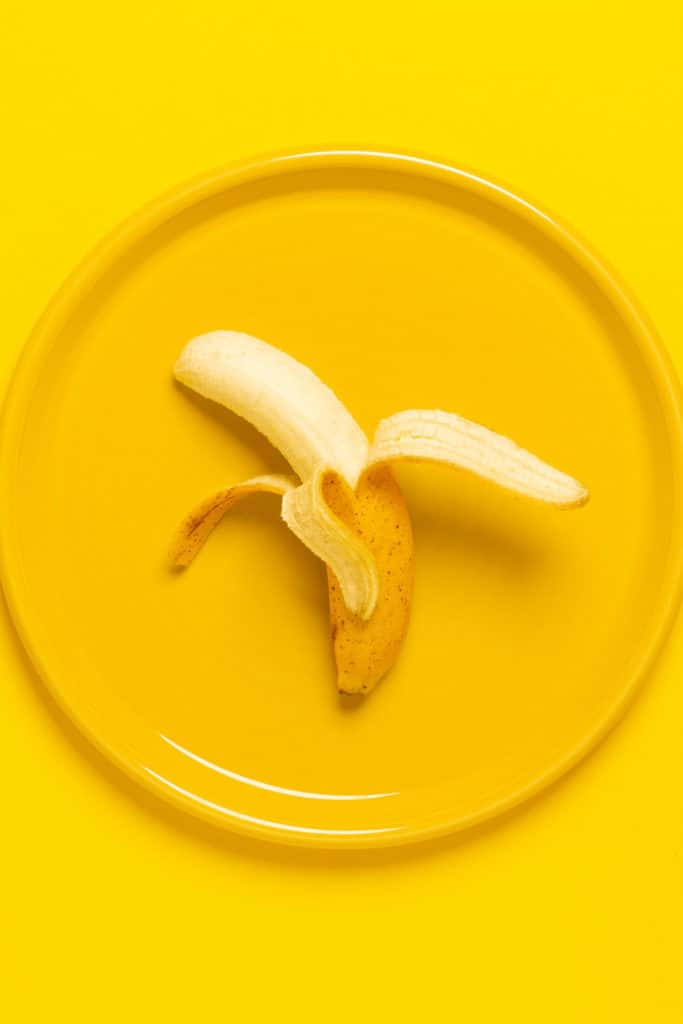It is especially unsettling when you bite into a piece of fruit and find an unwelcome surprise.
Whether the fruit is rotten, has an insect inside, or has something else wrong with it, all these experiences make me cringe.
If you ever bite into a banana with a black center, you should know a few things about Black Center Syndrome.
Banana Black Center Syndrome
Black Center Syndrome in bananas is caused by a fungus called Nigrospora fungus. Bananas with this syndrome generally look fresh and ripe with white flesh on the fruit, but there is a black core that can sometimes be crunchy when bitten into. It is best not to eat this black core because it could be a fungal infection. It does not mean the banana was overripe or rotten. The black core may also be caused by mishandling bananas in shipping.

4 Things You Need to Know About Banana Black Center Syndrome
1. Black Center Syndrome is Not the Same as Overripe Bananas
One of the most important things regarding Black Center Syndrome in bananas is that I am not speaking of overripe or black bananas.
Bananas with Black Center Syndrome look like regular healthy fruit but have a black center, whereas overripe bananas are black all over, and the fruit has rotted.
The fact that the fruit looks completely healthy and delicious is one of the more disturbing elements of Black Center Syndrome.
It is impossible to tell whether or not your banana has it until you peel it and break open the fruit.
Black Center Syndrome will not necessarily make the banana taste bad, either.
There are stories that some people were several bites into their banana before noticing the black center.
On other occasions, the individuals notice immediately, not because of flavor but because of texture.
Sometimes, Black Center Syndrome produces a hard, crunchy banana core that is colored black or dark brown.
Bananas should not be crunchy, and biting into one and seeing a dark, crumbly heart would be mortifying.
On the other hand, all bananas ripen from green to yellow to brown to black. As the bananas ripen, they get sweeter.
Even very brown bananas can still be used for baking.
But, if your banana has matured to the point that it is black, it is rotten and should not be eaten.
Black Banana Syndrome can ruin your banana experience, but it is important to know that two causes turn your banana’s center black.

2. Mishandled Bananas
Apparently, bananas are quite finicky, and dropping the bananas at the wrong time can cause the center to turn black.
This is common knowledge amongst those in the banana industry, and precautions are taken to ensure that the bananas delivered do not arrive with ugly black centers.
As bananas are harvested, the farmers make sure to box them carefully and keep them at a good temperature.
After the harvest, just as bananas do in our homes, the fruit continues to ripen.
As the bananas ripen, there comes a particular time when the fruit will blacken in the center if mishandled.
Unfortunately, due to the timing necessary to sell the fruit, the bananas almost always reach this crucial point of fragility when shipped to different stores and markets.
So, if a box falls off the pallet or something heavy is thrown on top of the bananas in shipping, the bananas could have Black Center Syndrome.
This situation is frustrating for all involved because, again, you can’t tell until you peel and start eating the banana.
So the consumer is grossed out, the vendors are unhappy, and the producers are also frustrated.
So if this unfortunate experience ever happens to you, try to understand that nobody meant to sell you a gross banana with a black center.

3. Fungal Infection
The other cause of Black Center Syndrome in bananas is much more sinister than rough handling at the wrong time.
If your banana has a black center on an otherwise healthy piece of fruit, it may have a fungal infestation.
The fungus is called Nigrospora, and it can infect bananas and eventually cause them to rot and almost liquidy.
This fungal disease, if consumed, could lead to vomiting and other stomach problems. However, it is not thought to be deadly for humans.
This fungus is actually red, but in bananas, it looks brown or is so dark it looks black.
This is why it resembles Black Banana Syndrome from mishandling the bananas.
Now that you know the two possible ways, your banana’s center has turned black. The question remains, should you eat it?

4. Are Bananas with Black Center Syndrome Safe to Eat?
If you asked me whether I would keep eating a banana with Black Center Syndrome, I would probably just throw the whole thing away.
Then, I would brush my teeth and gargle mouthwash for a while.
Banana producers insist that if your banana has a blackened core due to being dropped or hit at the wrong time, the fruit is still safe to eat.
And the Nigrospora fungus is not toxic to humans, but it has given some a belly ache.
So, I guess it is up to you.
I just do not want to take the risk of my banana carrying the fungus. So, I would probably skip out on that culinary experience.
However, some may opt to save most of the fruit by cutting around the blackened center. I leave that up to you.

Frequently Asked Questions About Banana Black Center Syndrome
Is there a way to distinguish between fungal infection and a blackened center due to mishandling in bananas?
Part of the challenge is that they can look extremely similar in bananas. And, while neither will kill you, I don’t relish eating a fungal banana. But, the fungal infection can look reddish-brown instead of black. That is one sign you could look for, but the fungus can still look black.
Conclusion About Banana Black Center Syndrome
Please remember that Black Center Syndrome is different from a rotten black banana.
And, be careful if you encounter a banana with a black center, just in case you don’t want to eat any fungus.
And finally, I recommend not eating bananas with this syndrome, but I leave that to each of you to make an informed decision.
Good luck, and hopefully, all your bananas in the future do not have blackened centers.

